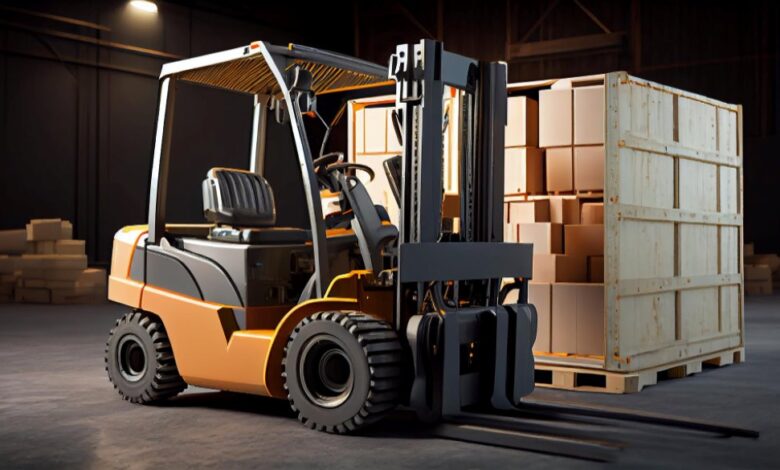The Hydraulic Blueprint: Components for Forklift Performance

Forklifts are the heroes, in the world of warehouses and industrial environments, effortlessly lifting and transporting loads with utmost precision and effectiveness. Behind their performance lies a sophisticated hydraulic system, a crafted network of components that collaborate harmoniously to ensure seamless operations. In this exploration, we will delve into the framework of forklifts, uncovering the essential elements that contribute to their exceptional lifting capabilities.
Comprehending Forklift Hydraulics
Forklift hydraulic parts play a role in enabling forklifts to function smoothly, providing the force and control for lifting lowering, and tilting loads. The hydraulic architecture of a forklift encompasses an array of components that synergistically convert power into force.
1. Hydraulic Pump
At the heart of every system resides the pump. Often regarded as its lifeblood. This vital component is responsible for transforming power into power by propelling hydraulic fluid throughout the entire system. There exist types of pumps such as gear pumps, vane pumps and piston pumps. Each offering distinct advantages in terms of efficiency and performance.
2. Hydraulic Fluid
Considered as an element, within any system hydraulic fluid acts as its vital life force.
Not does fluid transfer power but it also serves the important functions of lubricating and cooling the components, within the system. The selection of the fluid is crucial to ensure optimal performance and durability taking into account factors such as viscosity, temperature stability and anti-wear properties.
3. Hydraulic Cylinders
Hydraulic cylinders play a role in forklifts by converting pressure into linear motion. They act as the “muscles” of the machine, enabling the lifting and lowering of forks. These cylinders consist of a piston and rod enclosed in a cylinder. When hydraulic fluid is pumped into the cylinder it causes the piston and rod to extend thus lifting the load. The ability to precisely control these cylinders ensures accuracy and stability during lifting operations.
4. Control Valves
Control valves serve as traffic controllers within systems by directing the flow of fluid to different components. These valves regulate both speed and direction allowing for control over forklift movements. Common types of control valves include control valves, pressure control valves and flow control valves.
5. Hydraulic Lines and Hoses
In a system blueprint hydraulic lines and hoses function as its system. They are responsible, for transporting fluid from the pump to the cylinders and back again.
These parts need design to endure pressures and potential wear ensuring that the hydraulic system operates reliably without any leaks.
6. Reservoir and Filter
The hydraulic reservoir stores hydraulic. Allows air and contaminants to settle guaranteeing an consistent supply of fluid for the pump. Filters are elements that remove impurities from the fluid preventing any damage, to the system. Regular maintenance of the reservoir and filter is vital for ensuring the longevity and performance of the forklifts system.
7. Accumulators
Accumulators serve as energy storage devices within the system by absorbing and releasing energy thereby maintaining system pressure. They play a role in providing power during peak demand contributing to overall efficiency and performance of the forklift.
8. Hydraulic Motors
In models of forklifts hydraulic motors are utilized to drive wheels or other components. These motors convert pressure into motion propelling the forklift forward or backward. The use of hydraulic motors enhances versatility by allowing control and maneuverability in operational environments.
9. Seals and O Rings
Seals and O rings are essential components that prevent any leakage of fluid, from the system.
They are strategically positioned in areas where different parts come together or move to keep the system intact. It’s crucial to maintain and replace seals and O rings in order to prevent leaks and ensure that the hydraulic components of the forklift last longer.
10. Pressure Relief Valve
The pressure relief valve serves as a safety mechanism, in the system preventing pressure from building up. If there is a surge in pressure the relief valve opens up allowing hydraulic fluid to bypass the system and preventing any damage to the components. This safety feature plays a role in maintaining both reliability and safety for the forklift.
Optimizing Forklift Performance
The hydraulic blueprint of a forklift is an interconnected system that demands engineering along with regular maintenance. To optimize forklift performance, it’s important to consider the factors:
- Routine Maintenance
Regular inspections, fluid checks and component replacements are tasks that ensure both longevity and top-notch performance of the system.
- Fluid Management
Using hydraulic fluid and following recommended guidelines regarding fluid change intervals are crucial aspects when it comes to maintaining efficiency and functionality, within the hydraulic system.
- Operator Training
Trained forklift operators possess an understanding of how the hydraulic system works, allowing them to operate with precision. This reduces both wear and tear risks as potential damage.
- Environmental Factors
When forklifts are used in temperatures or challenging conditions, it may be necessary to take steps to ensure optimal hydraulic performance. This could involve using fluids or implementing cooling systems.
Committed to sustaining the seamless operation of your systems, our specialized hydraulic services company excels in expert solutions. Our dedicated team prioritizes system design, meticulous maintenance, and timely repairs, guaranteeing the smooth functionality of your operations. Count on us to keep your hydraulic machinery performing at its best.
Conclusion
The hydraulic design of a forklift is a masterpiece of precision engineering, where each component plays a role, in achieving smooth lifting and lowering operations. Understanding the complexities of these parts gives us insights into the reliability, efficiency and safety of forklift performance.
As forklifts continue to be essential in material handling and logistics the ongoing enhancements and innovations in hydraulic systems contribute significantly to their success across industries. The interconnected components at the heart of the design remain central, to achieving dependable material handling operations.



